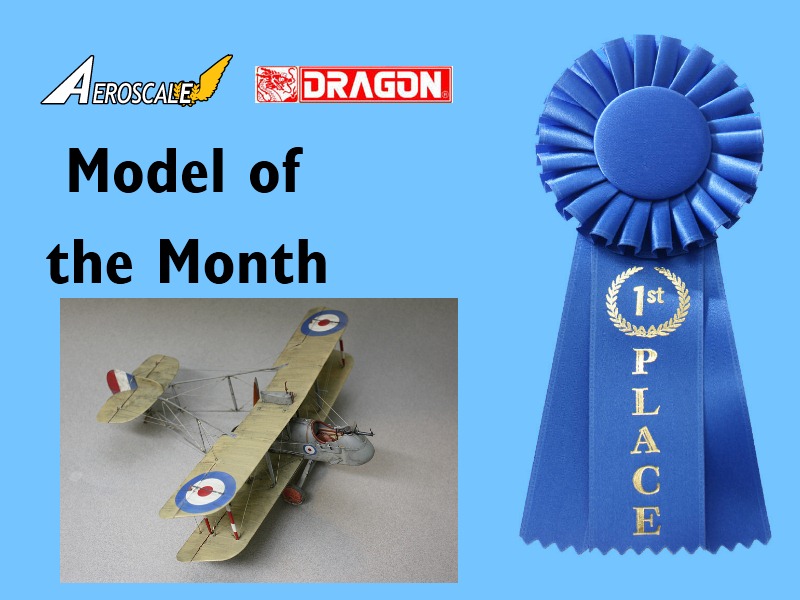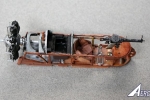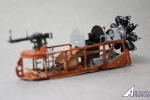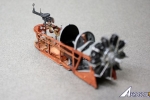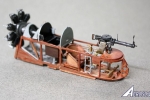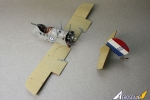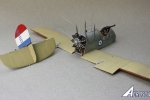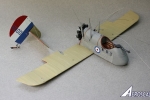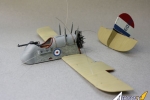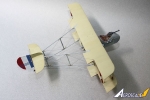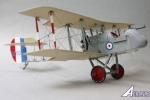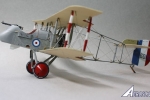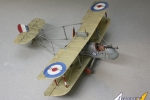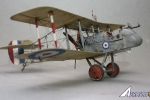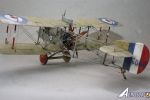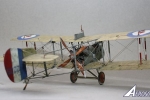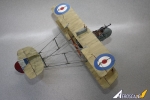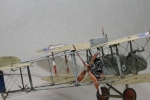1⁄32April MOM Winner
5
Comments
history
The Airco DH.2 was a single-seat biplane "pusher" aircraft which operated as a fighter during the First World War. It was the second pusher design by Geoffrey de Havilland for Airco, based on his earlier DH.1 two-seater. The DH.2 was the first effectively armed British single-seat fighter and enabled Royal Flying Corps (RFC) pilots to counter the "Fokker Scourge" that had given the Germans the advantage in the air in late 1915. Until the British developed a synchronisation gear to match the German system, pushers such as the DH.2 and the F.E.2b carried the burden of fighting and escort duties.History adapted from Wikipedia.
the model
This is the Wingnut Wings 1/32 kit. The model represents aircraft in service in mid 1916 - a period that would start evolution from entirely Clear Doped Linen aircraft to what would eventually be known as ambiguous PC10. The aircraft I've built bears application of PC8 (predecessor to PC10) on top surfaces of the wing and tail planes - I've mixed the color from equal parts Model Master Acryl Field Drab and Dunkelgelb to attain "light khaki" coloration, as instructional material suggests. Nacelle materials, as well as most exterior wood surfaces, are painted neutral gray, while all interior wood is left as dark varnished wood - this is where I took some artistic license, as instructions suggest that all wood would most likely painted gray.Rigging is done with Beadalon 0.01" (0.25mm) jeweler's wire by drilling and running through thicker surfaces or glued to tail booms framework with small amounts of CA glue. Turnbuckles are made of stripped electric wire insulation painted with brass acryl. Rigging a "pusher" proved to be a challenge and gave a healthy respect for this subject - one must remember to apply counter-pressure to opposing lines when rigging the tail booms, as it's easy to through the alignment askew.
Weathering is done with layers of heavily diluted artist oils - separating washes in detail accents, overall grime and castor spray from the engine. The latter was most fun to apply, given the effects of rotary engine sans any cowling.
Comments
Looks a right good model.
Please could you tell us the scale and manufacturer?
Clive
MAY 16, 2014 - 09:26 PM
I thought that I has included that important little fact when I assembled the article, but in fact I hadn't, so I've had to go back in and correct it.
It's the 1/32 Wingnut Wings kit.
MAY 17, 2014 - 01:13 AM
Beautiful! This both makes me want to get started on mine and scares me away. Happily I have about 20 other projects I need to do first. Excellent work!
Michael
MAY 17, 2014 - 04:25 AM
Thanks, everybody!
The kit is WingNut Wings AMC DH2 in 1/32 scale - the kit offers a very good range of early to late build options, with me choosing the option somewhere in between. Clear doped linen was out (one option), with PC8 color being tested (option I chose) while PC10 haven't quite made it to the frontlines (3-4 options) and took all the fun out of decorating one's plane.
It's worth noting that at least one option will re-work major components of the aircraft completely - while not chosen, one of the build options completely restructures the cockpit and the offset gun mount in the nacelle. It's the WnW way.
Rigging is the main challenge of this build as tail booms flex and twist with too much pressure applied by any one line. In the end, it's a good learning tool as any rigging less complicated than the Pusher just gets "easy". I wouldn't make it my first Early Aviation project, but neither my last.
MAY 17, 2014 - 08:10 PM
Copyright ©2021 by Ivan Bouinatchov. Images also by copyright holder unless otherwise noted. The views and opinions expressed herein are solely the views and opinions of the authors and/or contributors to this Web site and do not necessarily represent the views and/or opinions of AeroScale, KitMaker Network, or Silver Star Enterrpises. Images also by copyright holder unless otherwise noted. Opinions expressed are those of the author(s) and not necessarily those of AeroScale. All rights reserved. Originally published on: 2014-05-17 01:34:55. Unique Reads: 5256




